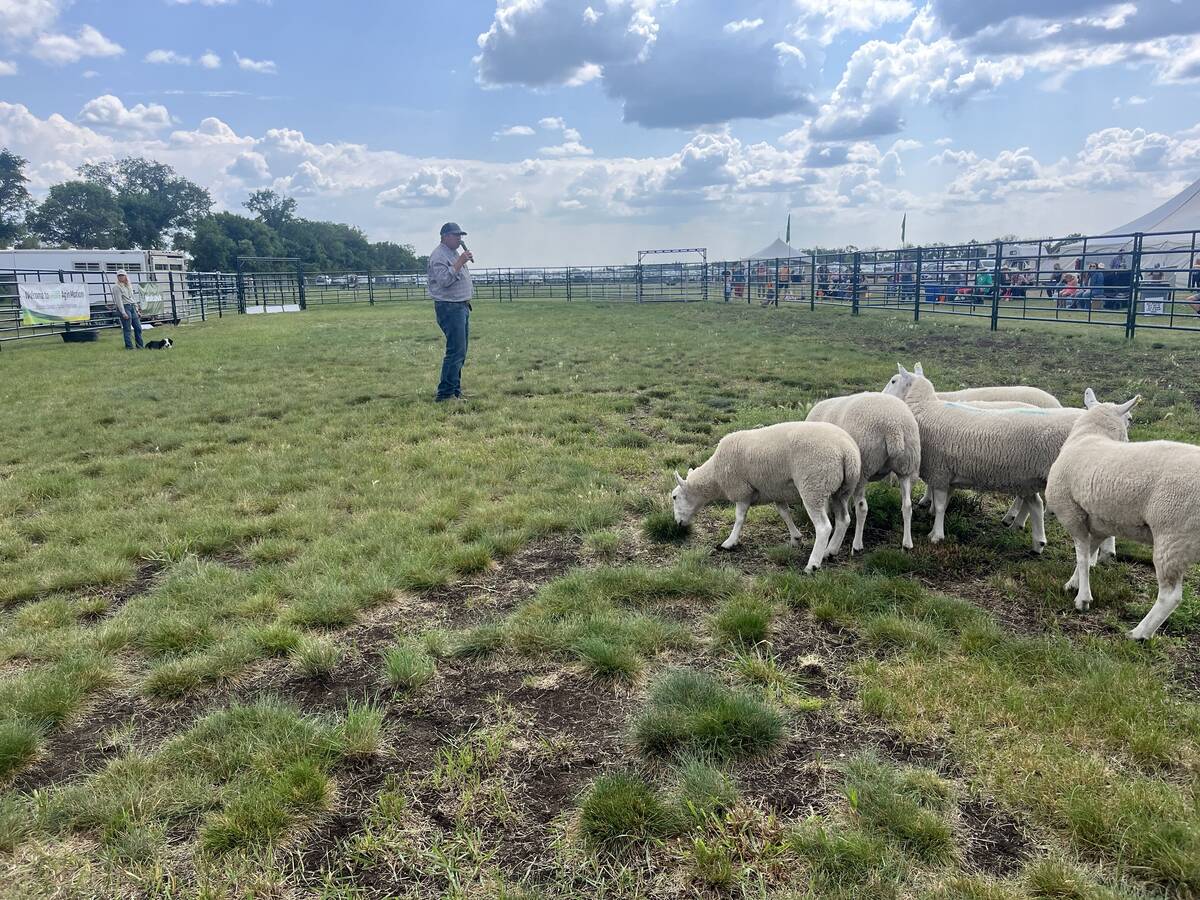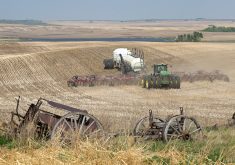James Clayton Gilson is often thought of as the father of crop insurance in Canada.
Born in 1926 into a family of six children on a farm near Deloraine, Man., “Clay” Gilson attended the University of Manitoba, where he earned a bachelor of science in agriculture and a master’s degree in science with a major in agricultural economics.
He later earned a PhD from Iowa State University.
He was inducted into the Manitoba Agricultural Hall of Fame in 1996.
The drought of the 1930s is said to have affected him deeply. His experiences in that dark period inspired him to better understand farming economics so that he could improve the lives of farmers.
Read Also

Stock dogs show off herding skills at Ag in Motion
Stock dogs draw a crowd at Ag in Motion. Border collies and other herding breeds are well known for the work they do on the farm.
Manitoba Agricultural Services Corp. president Neil Hamilton said Gilson told him that the Great Depression, particularly the effects of drought, had a profound effect on his thinking with regard to agricultural policy.
“I think that childhood experience really impressed upon him the need to have a crop insurance program,” he said.
“He really challenged people to think about the impact of policy beyond the obvious things. He was a big thinker; he wasn’t mired in details, but he wanted to connect the big pieces of the puzzle.”
Driven out by the Dust Bowl, Gilson and his family moved to Manitoba’s Interlake region.
Gilson served as a teacher, researcher and administrator at the U of M for 46 years, writing hundreds of papers, reports and books, and serving on many panels and boards, but was best known for his work on developing the first comprehensive crop insurance program in Canada.
First introduced in Manitoba in 1960, it insured fields of wheat, oats and barley in three areas covering 17 municipalities, guaranteeing farmers 60 percent of average yield over 35 years.
Premiums varied according to zones of risk.
In the south-central area where risk was deemed to be low, coverage amounted to $12.76 per acre, or
60 percent of the value of an 11 bushel per acre wheat crop.
The high-risk area in the southwest offered coverage of nine bushels per acre, or a guaranteed return of $10.44 per acre.
Intended to protect grain growers from a list of designated perils, which included hail, drought, flood, excessive rainfall, frost, wind and tornado, as well as diseases such as rust or insects, it took in $320,000 in premiums in its first year and paid out $87,000.
In comparison, crop year 2007 saw $850 million in premiums paid.
Crop insurance has paid out roughly $1.5 billion over the past four decades in Manitoba. The lion’s share of that total, or about half a billion dollars, was sent to farmers in 2004 and 2005.
Hamilton described Gilson as a “very forward thinker” who could properly be considered the founder of crop insurance and a founding father of agricultural economics at the U of M.
“He was the predominant, premier ag policy person of his day,” Hamilton said.
“I think you could say he was the father of Canadian crop insurance.”
Gilson was also appointed to numerous positions, including the Joint Commission on Grain Trade, the Science Council of Canada, the Manitoba Crop Insurance Corp. and the Agricultural Advisory Group on Manitoba’s Economic Future.
Charles Gilson, whose father was Clay’s first cousin, recalled visiting the distinguished professor when he was studying at the U of M.
“For a university professor, you wouldn’t feel like you were talking to anybody different from someone off the street,” Charles said.
“He was very practical, down-to-earth. I could go up and talk to him anytime I wanted. He always made time for you.”
Gilson died in 2000 at the age of 74.
















